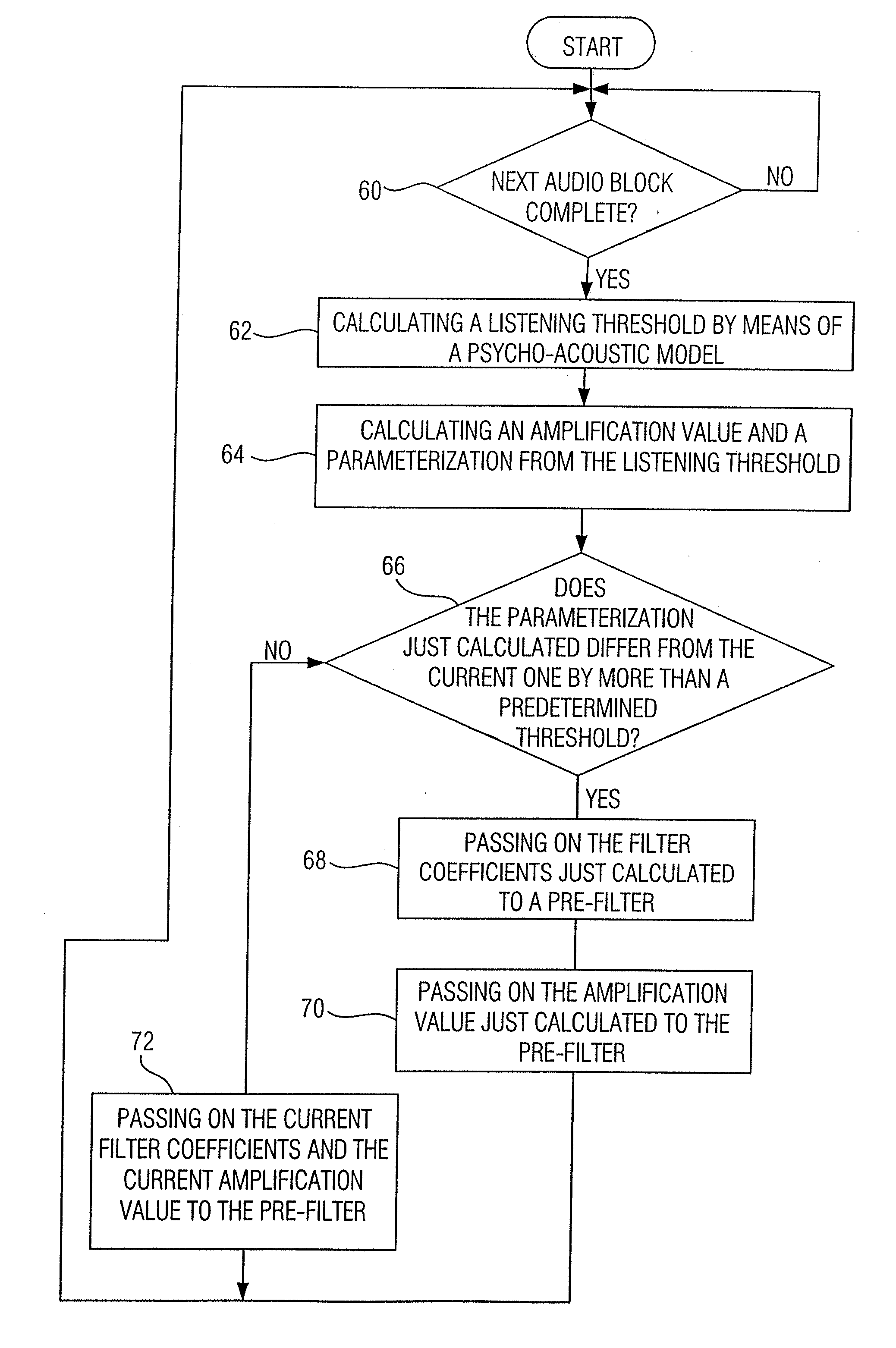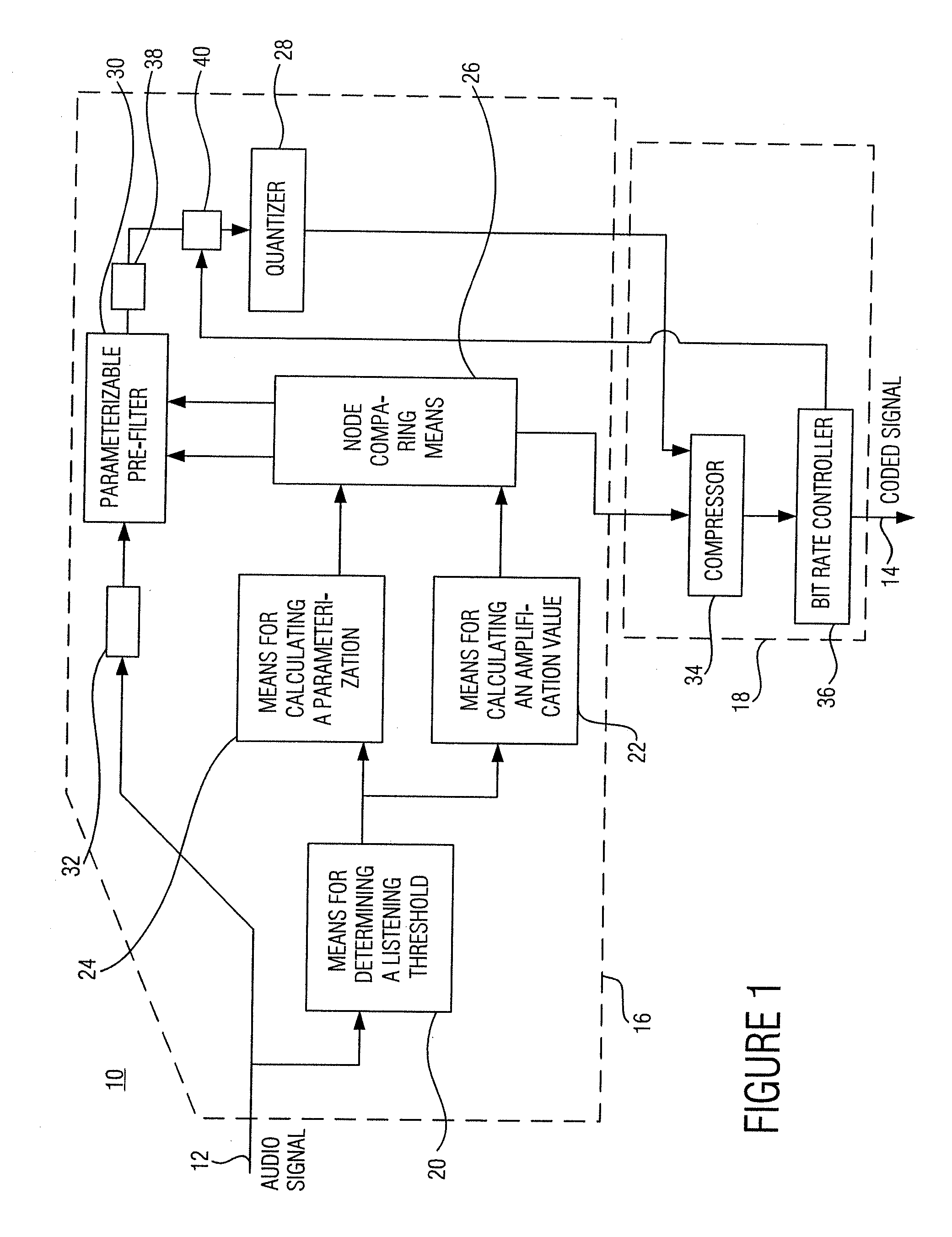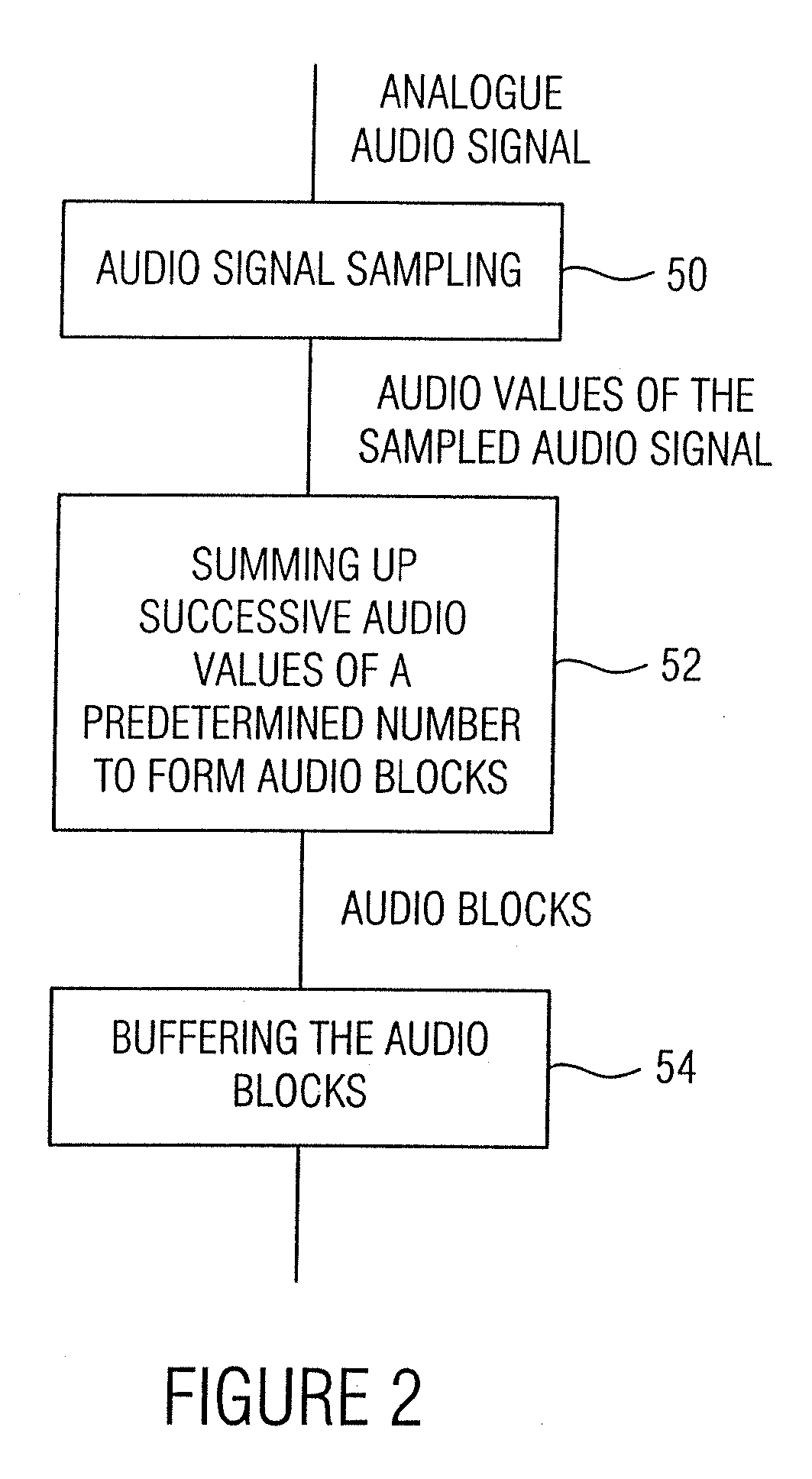Method and device for quantizing an information signal
a technology of information signal and quantizer, applied in the field of quantizers or quantizing information signals, can solve the problems of affecting the so as to achieve the effect of high data compression of information signal and little deterioration in quality of original information signal
- Summary
- Abstract
- Description
- Claims
- Application Information
AI Technical Summary
Benefits of technology
Problems solved by technology
Method used
Image
Examples
Embodiment Construction
[0037]FIG. 1 shows an audio coder according to an embodiment of the present invention. The audio coder, which is generally indicated by 10, includes a data input 12 where it receives the audio signal to be coded, which, as will be explained in greater detail later referring to FIG. 5a, consists of a sequence of audio values or sample values, and a data output where the coded signal is output, the information content of which will be discussed in greater detail referring to FIG. 5b.
[0038] The audio coder 10 of FIG. 1 is divided into an irrelevance reduction part 16 and a redundancy reduction part 18. The irrelevance reduction part 16 includes means 20 for determining a listening threshold, means 22 for calculating an amplification value, means 24 for calculating a parameterization, node comparing means 26, a quantizer 28 and a parameterizable pre-filter 30 and an input FIFO (first in first out) buffer 32, a buffer or memory 38 and a multiplier or multiplying means 40. The redundancy...
PUM
 Login to View More
Login to View More Abstract
Description
Claims
Application Information
 Login to View More
Login to View More - R&D
- Intellectual Property
- Life Sciences
- Materials
- Tech Scout
- Unparalleled Data Quality
- Higher Quality Content
- 60% Fewer Hallucinations
Browse by: Latest US Patents, China's latest patents, Technical Efficacy Thesaurus, Application Domain, Technology Topic, Popular Technical Reports.
© 2025 PatSnap. All rights reserved.Legal|Privacy policy|Modern Slavery Act Transparency Statement|Sitemap|About US| Contact US: help@patsnap.com



